Léa Surugue, who works on misinformation with the French government and has co-authored a book on the subject, looks at how it has gained traction in the pandemic and what can be done to debunk false claims.
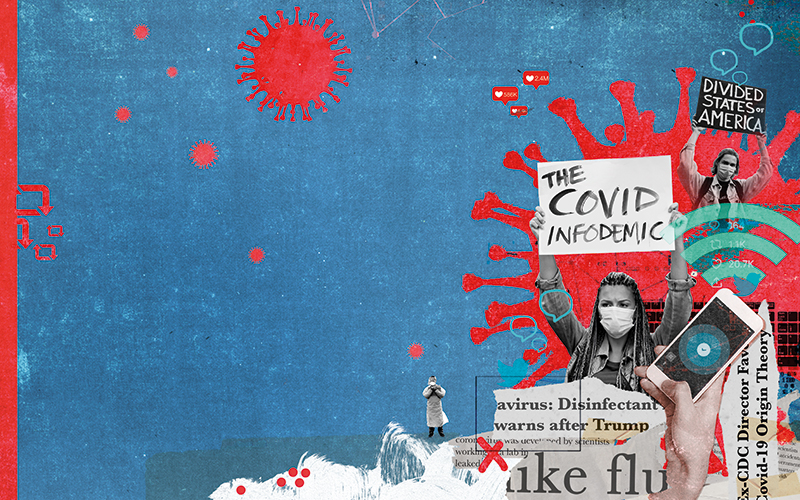
Pandemics have always given rise to rumours, misinformation and propaganda. In 1918, during the influenza epidemic, conspiracy theories were disseminated widely, as people looked for a culprit to blame for the crisis. News outlets in different countries alternatively said the pandemic was caused by the war and the “enemy”, by “foreigners”, or by the “Jews”. Some media even portrayed German submarines as weapons of war designed to spread the virus. There are many other examples of misinformation fuelled by fear and political exploitation of epidemics. In the 19th century, for instance, a yellow fever epidemic in New Orleans was blamed on immigrants. During the bubonic plague, there is evidence that the threat of quarantines was used as a political weapon and a tool for diplomatic negotiation.
“When people are fearful, some of them resort to conspiracy theories, because having this idea that other people out there are responsible for a bad thing offers psychological comfort. At least if you have a culprit, they can stop what they are doing and things can go back to normal. Believing conspiracy theories offers a form of a solution,” says Professor Stephan Lewandowsky, a cognitive scientist at the University of Bristol, who studies people’s responses to misinformation and propaganda.
Communication technology
This belief in conspiracy theories and willingness to take inaccurate information for granted is not without consequences. It can weaken the social fabric of a community and has clear public health consequences when it leads to people stopping putting their trust in doctors and science. Unsurprisingly, the COVID-19 pandemic has not been exempt from its own share of fake news, rumours and misleading claims – and in the age of new communication technologies and social media, this inaccurate and sometimes entirely false information can travel fast and reach a larger audience.
Furthermore, increased political polarisation in many countries – especially in the US – has driven the spread of fake news, misinformation and even disinformation. In a study published in May 2021 in the American Political Science Review, researchers stated that political partisanship in the US – in particular self-reported animosity towards the opposing party – was a good predictor of fake
news sharing. In this context, the misinformation phenomenon has been exacerbated during the pandemic to such an extent that the World Health Organization has warned of an “infodemic” (see box overleaf), from the early days of the pandemic.
Two years of COVID-related fake news
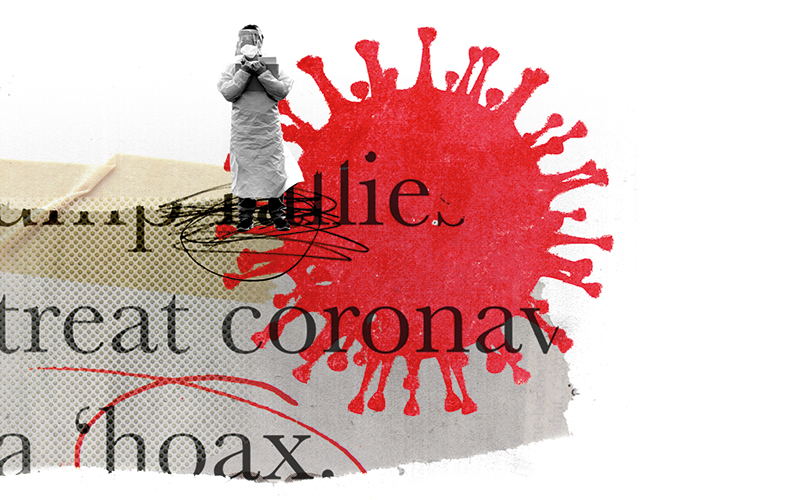
“COVID is no worse than the flu”, “China has created the virus in a lab”, “5G has allowed the virus to spread”…
As the world first discovered SARS-CoV-2 and the disease it caused, fear and misunderstanding caused many rumours and conspiracy theories to take hold. Although many have been discredited today, they have set the stage for the tide of misinformation that has characterised this pandemic and sometimes have had a dramatic impact in the real world. For example, refusal to believe that SARS-CoV-2 could cause severe disease led people to question the efficacy of lockdowns. When a few individuals in the UK believed that 5G was somehow responsible for the spread of the virus, mobile towers were set alight. Believing that China has played a role in the emergence of the virus has been associated with increased racism in many countries.
“Rumours and fake news tend to travel much further than the corrections of these articles”
Contradictory messages from the authorities, misunderstanding from the public about how research works and how fast it can achieve results, and lack of scientific data regarding a previously unknown virus at the beginning of the pandemic, have also given rise to misinformation in the early days of the COVID crisis, from which it has been hard to recover. “The discourse around masks is a good example. Health authorities worldwide stated in the beginning of the pandemic that masks were not useful and this has been problematic as it has then been exploited by anti-mask groups”, says Jevin West, Associate Professor at the University of Washington.
Some politicians have also used the crisis to their advantage, sharing their opinion about treatments and vaccines without backing it up with robust data. Issues such as which treatments should be given to patients have divided people along political lines and have been associated with a flow of false information. Hydroxychloroquine – an anti-malaria drug – is a striking example of how rigorous science and medicine can clash with politics. On 16 March 2020, a study on use of hydroxychloroquine in patients with SARS-CoV-2 was “published” on YouTube, followed by a preprint in the International Journal of Antimicrobial Agents (see box, right). It claimed to demonstrate “a rapid and effective speeding up of patients’ healing process, and a sharp decrease in the amount of time they remained contagious.” Despite lack of rigorous evidence for efficacy, some clinicians started to prescribe this treatment. In April 2020, the US president, “speaking on gut instinct”, authorised his government to purchase 29 million hydroxychloroquine pills.
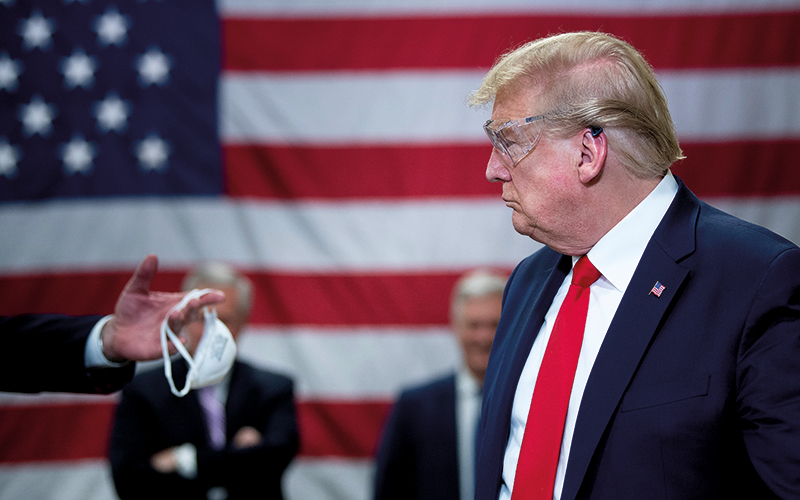
“Health authorities worldwide stated in the beginning of the pandemic that masks were not useful and this has been problematic”
Many articles in the peer-reviewed literature were subsequently published, convincingly demonstrating the lack of efficacy of this treatment. But the harm was already done, and hydroxychloroquine quickly became a heatedly debated and politically polarising issue between different groups both on- and off-line.
Vaccines have also been a source of debate. While an anti-vax movement has long existed in many countries, the fact is that people have been apprehensive when presented with new mRNA vaccines – which were developed incredibly rapidly based on a technology they did not understand. This has put anti-vax messages in the spotlight. False information regarding vaccines is now widespread online. This means that increasing vaccination uptake has been difficult in many countries, and authorities have sometimes had to come up with strong incentives.
Preprints and open science
The movement towards open science, with actions taken to make scientific data more widely available and to publish preprints, is beneficial to the scientific community and can help research progress faster.
However, communicating science to the wider public means being careful about how results from preprints are shared. There is concern that findings of importance to public health reach the wider public via the media or social media, when the data is still unchecked and possibly incorrect.
This has been exacerbated during the pandemic, as research has been happening at a rapid pace. Some estimates suggest that publications which usually took 100 days from submission to acceptance are now taking six days. In this context, and faced with an important public demand for information, some preprints have become viral.
While the peer-review system is not flawless, publicising results that have not been validated by experts can lead to misinformation if the data is inaccurate, not contextualised or not explained properly.
“With this pandemic, it’s the first time that preprint publications in the field of life science have been put forward to such an extent. The problem is that there have been many examples of preprints that have gone viral, but major flaws were identified not long after. When reporting on preprints, journalists need to make it clear that the data has not been peer-reviewed and that we need to proceed carefully” Jevin West points out.
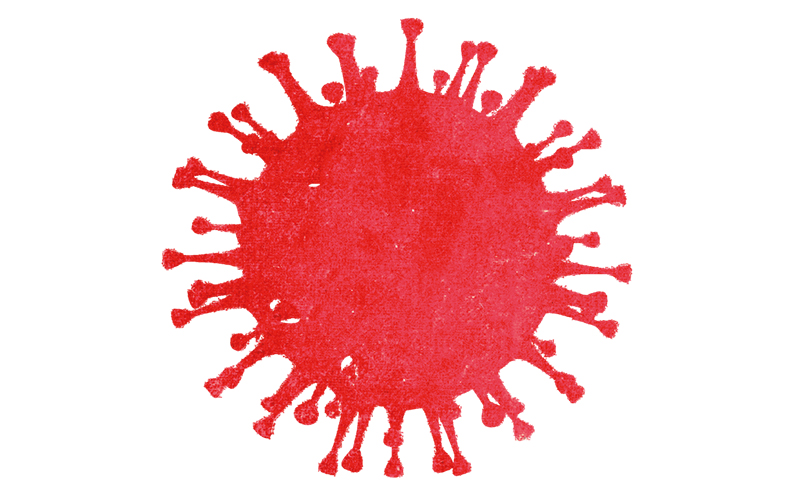
The way forward
While it seems that misinformation has become a widely visible issue during the COVID-19 pandemic, there are ways to combat it. None is perfect, and in all probability, these efforts will not reach the small but vocal minority of people who adhere to conspiracy theories or belong to the most radical fringes of the anti-vax movement. However, it is possible to get accurate facts out to people who are hesitant, unsure of what information they can trust and need reassurance when it comes to science, via a combination of well-designed education strategies and policy interventions.
Improving science literacy in the general population and educating people early on – starting in schools – to think critically and identify fake news online is crucial. With this goal in mind, fact-checking organisations have played an important role for years now, even before the term “fake news” became popular. More than 300 fact-checking projects are currently active in 53 countries, including initiatives by more traditional media, but also charities, according to the Reporter’s Lab at Duke University.
There is evidence that fact-checking information online and debunking inaccurate information can have a positive, lasting effect. A recent study found for example that fact-checking reduced belief in misinformation, with most effects still apparent more than two weeks later. However, it is not enough to entirely stop the flow of misinformation and disinformation.
“While we need to do more to arm information consumers themselves, there is evidence to suggest that the work done by fact checkers does help. However, research has shown that rumours and fake news tend to travel much further than the corrections of these articles,” Jevin West says.
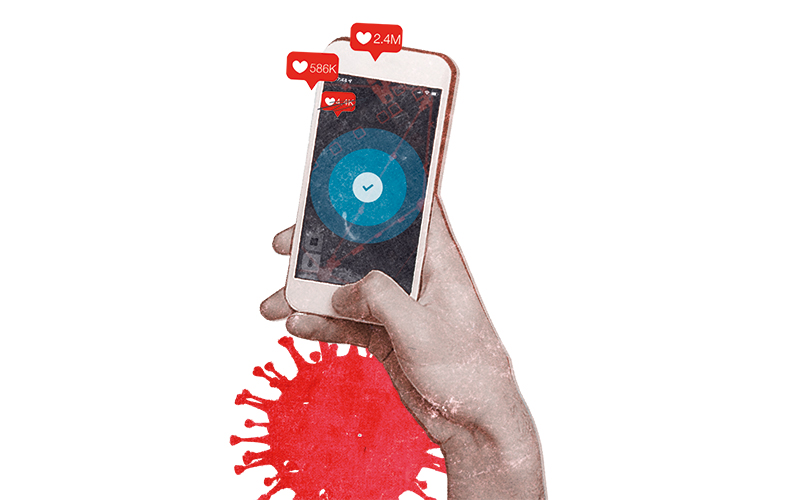
Setting up robust public health campaigns, targeted to the right individuals, is also crucial. A recent study has shown, for instance, the success of a well-designed, creative social media campaign to improve HPV vaccination uptake in Denmark. “At a political level, it is crucial to have a clear policy and clear message, and to push it through with determination if you want to combat fake news and increase vaccination uptake. Germany, for example, has encountered difficulty in getting people vaccinated because the message from authorities was inaudible, confusing, and contradictory. It’s also important to recognise that political polarisation is increasing and is also fuelling the infodemic”, Stephan Lewandowsky says.
However, general mistrust towards public authorities and political polarisation means this kind of communication is not always 100% successful. In order to convince people of the benefits of treatments or vaccination, it is thus important for scientists and doctors to speak up and open up a dialogue with the public. Getting health professionals to listen to people, to hear and reformulate their concerns, and to provide them with explanation and advice in one-to-one meetings can be helpful to increase vaccination uptake for example, although it can be time-consuming.
In the long term, however, none of these efforts will be entirely successful without also taking the time to think about how news become viral in the media and on social media – by recognising that quality content is available on these platforms, but also that misinformation is often more widely shared and seen.
Jargon Buster
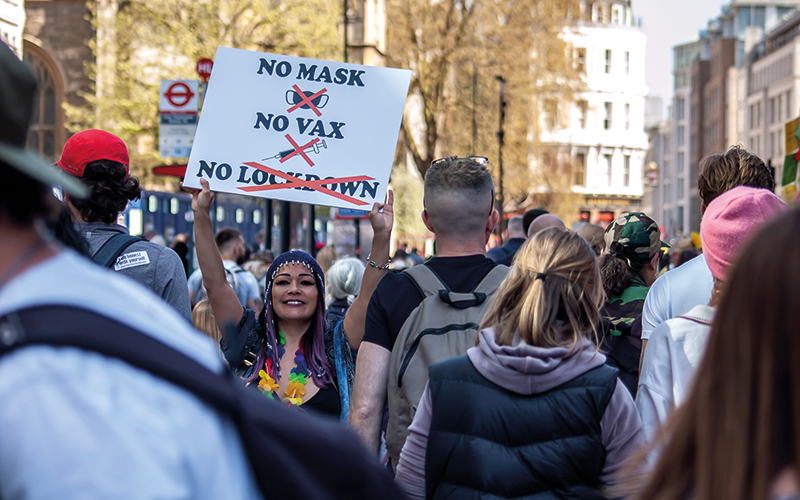
The term infodemic was coined in 2003 by political scientist David Rothkopf to discuss how the spread of inaccurate facts about disease had impacted social, economic and health systems. The concept has been used in academic circles, studied repeatedly, and it has become widely publicised with the COVID-19 crisis. The WHO defines it as “too much information including false or misleading information in digital and physical environments during a disease outbreak”. Misinformation is incorrect or misleading information, while disinformation is false information that is deliberately and often covertly spread in order to influence public opinion or hide the truth. Conspiracy theories are theories that view different events as the consequence of a secret plot by usually powerful conspirators/enemies.
“What we have to do is to make high-quality content more accessible and more visible. We need to have a conversation about how we can design social media platforms so that they do not reinforce poor information. We need to rethink the way information reaches us on these platforms, working with these companies to audit and where necessary improve the way their algorithms work. This will be one of the most important political battle of the years to come,” Stephan Lewandowsky concludes.
Image credit |Sarah-Hanson|Getty|Shutterstock
